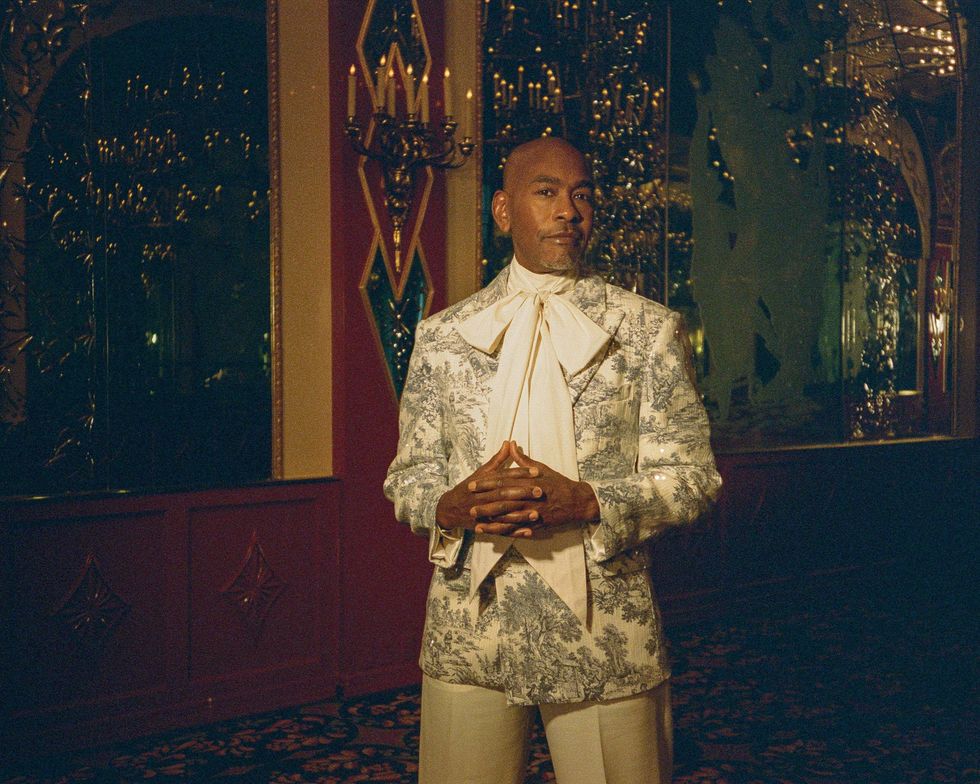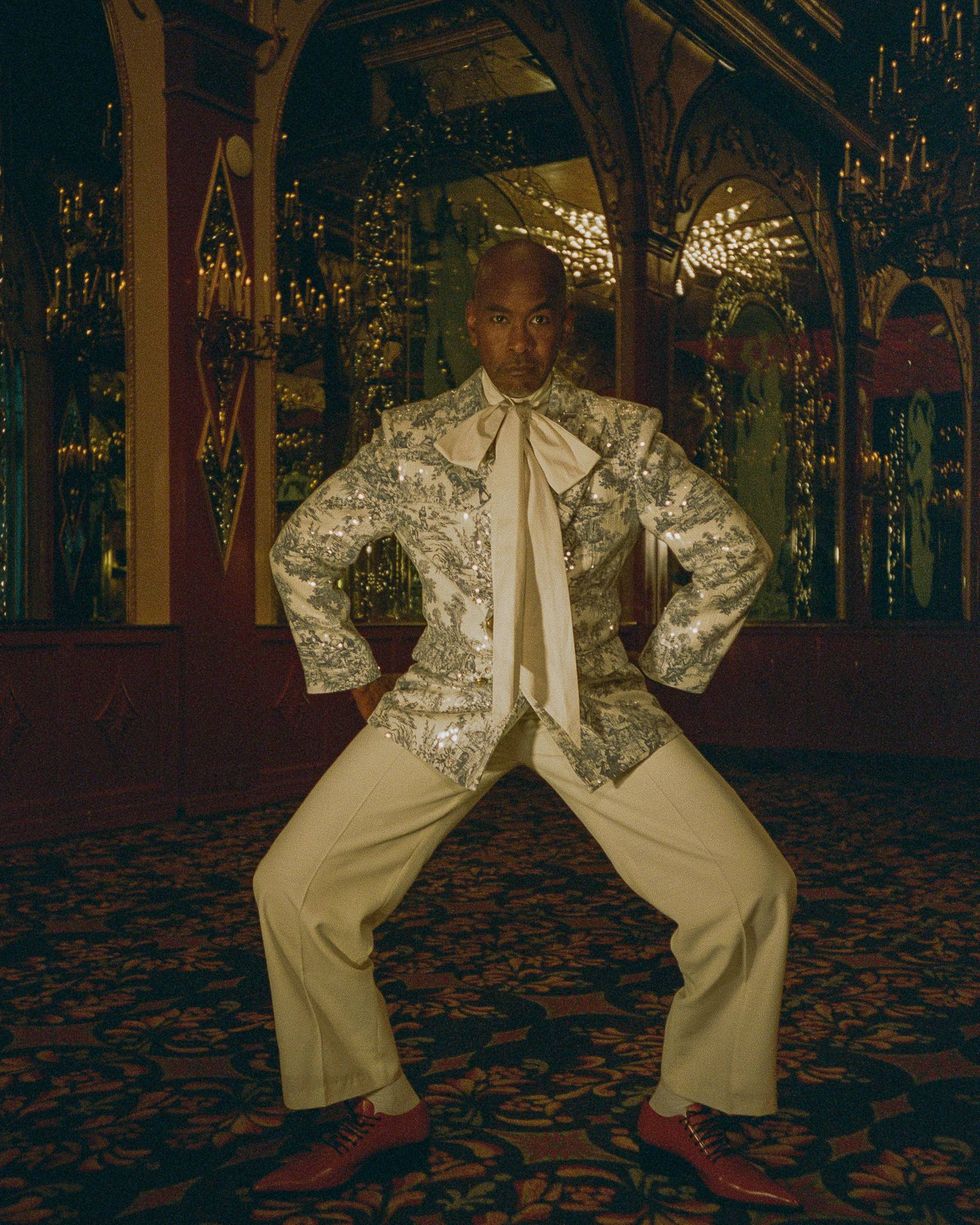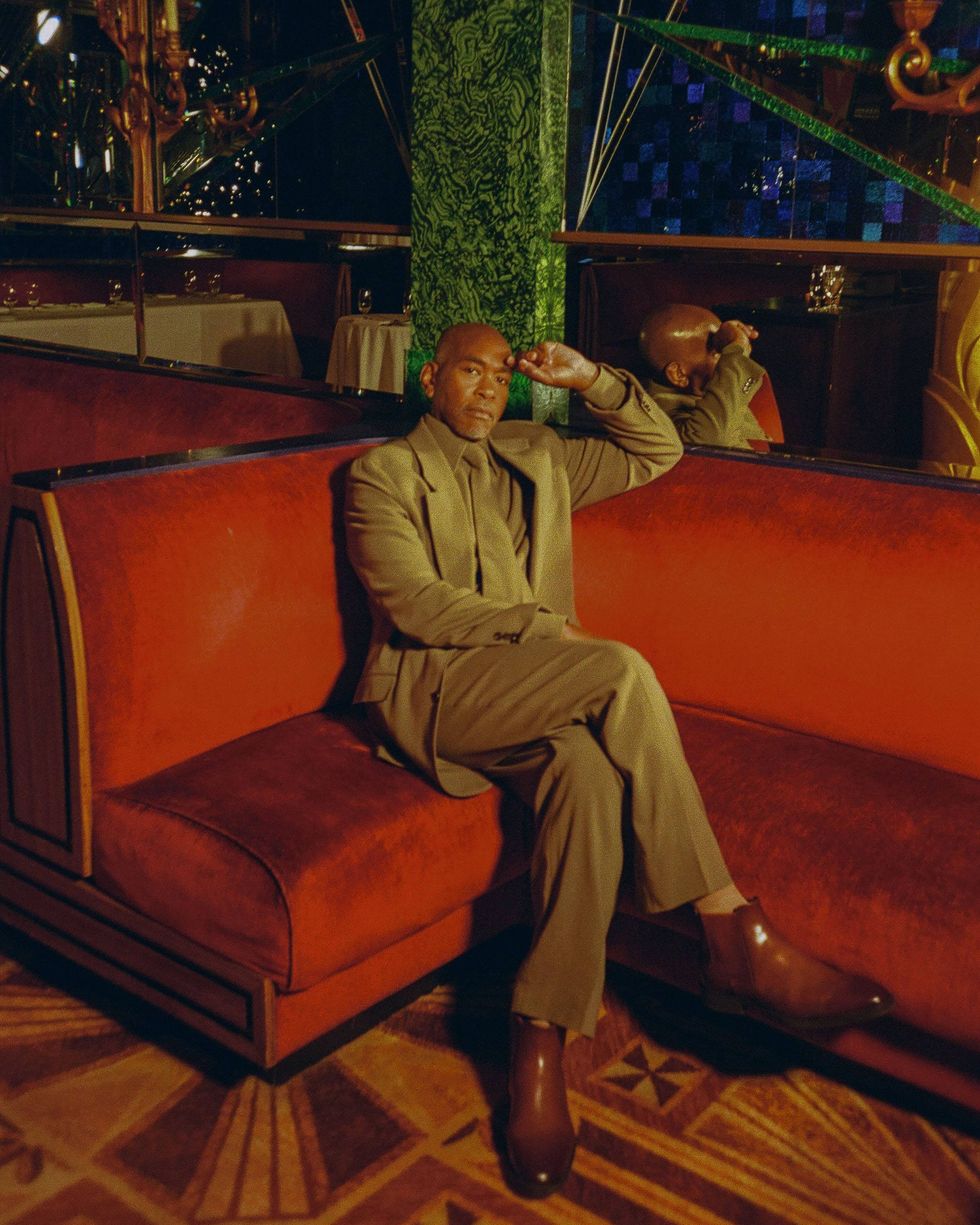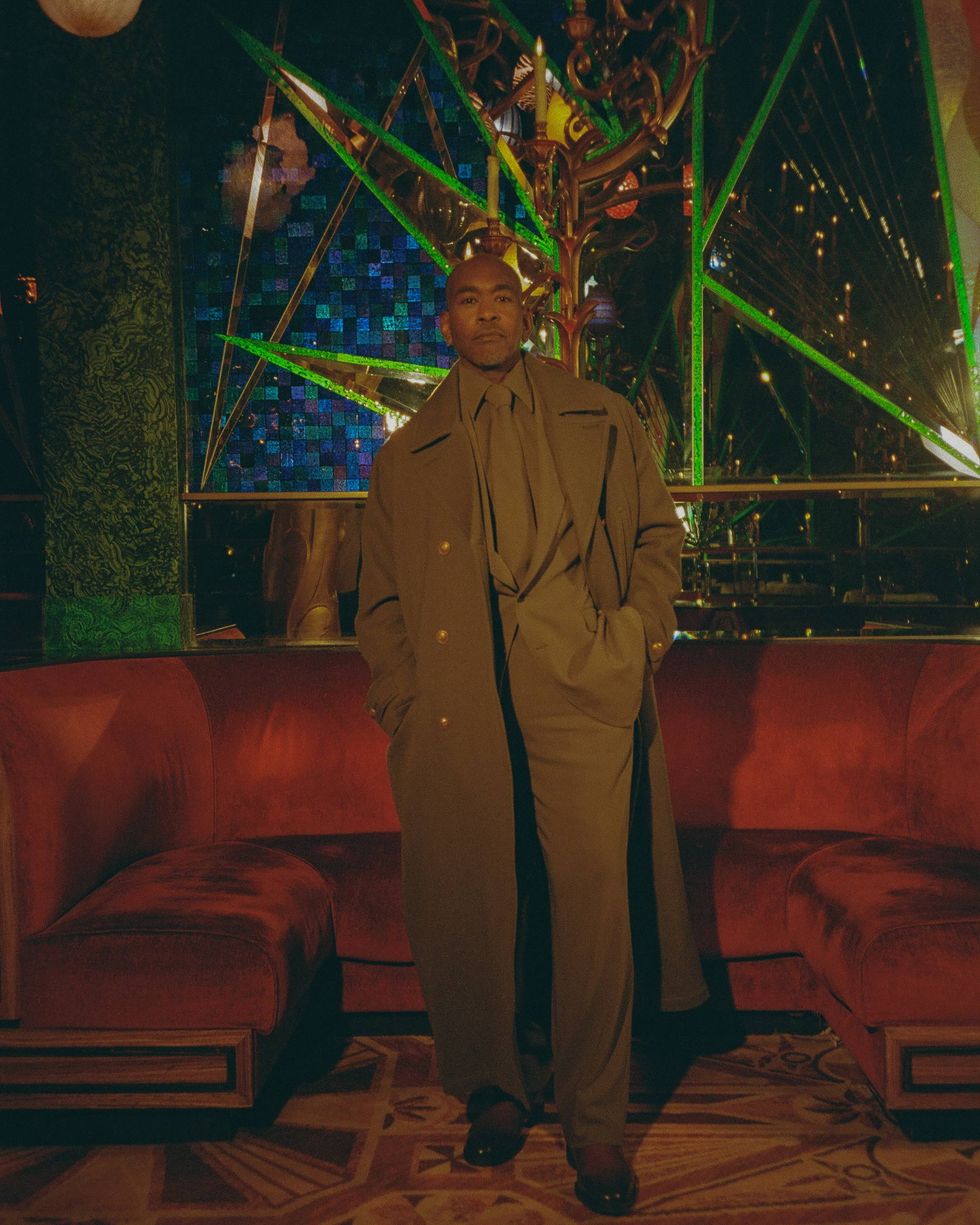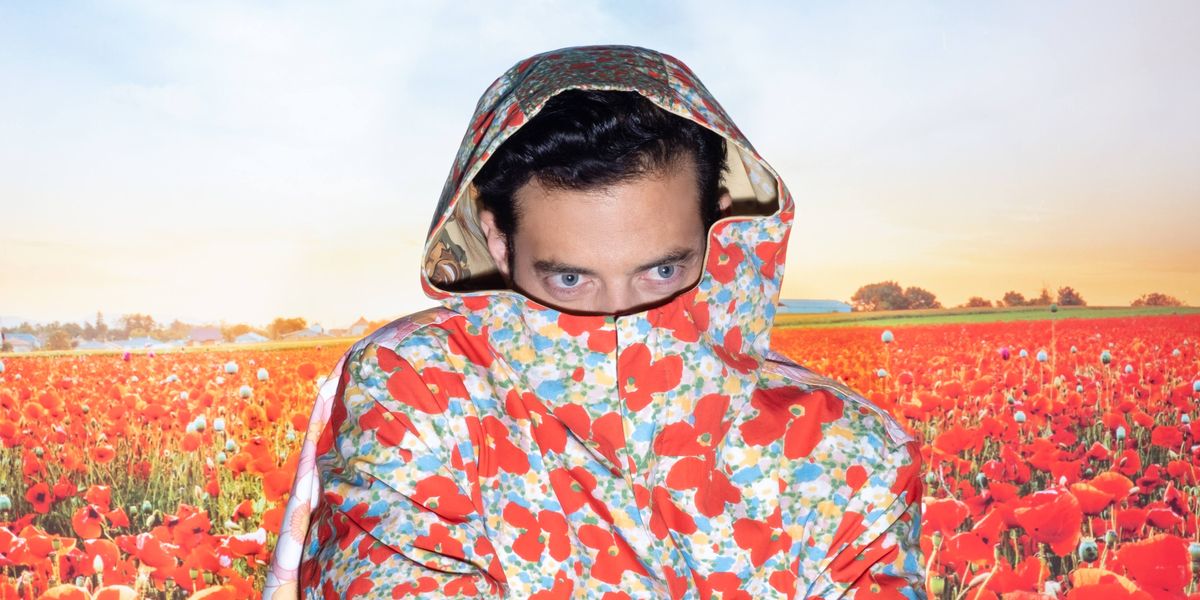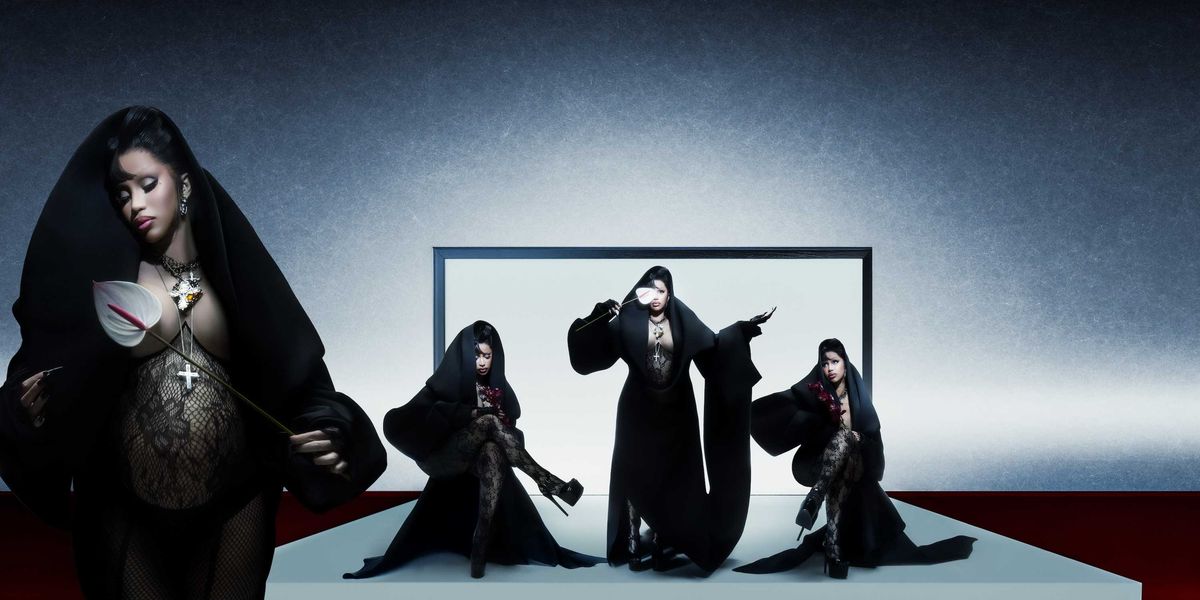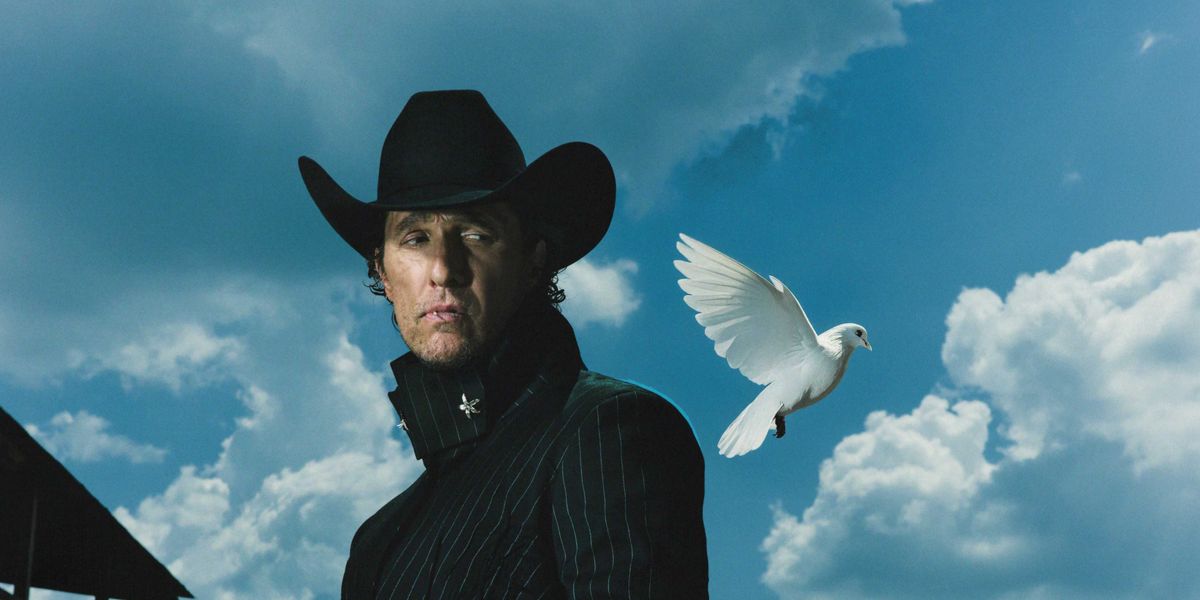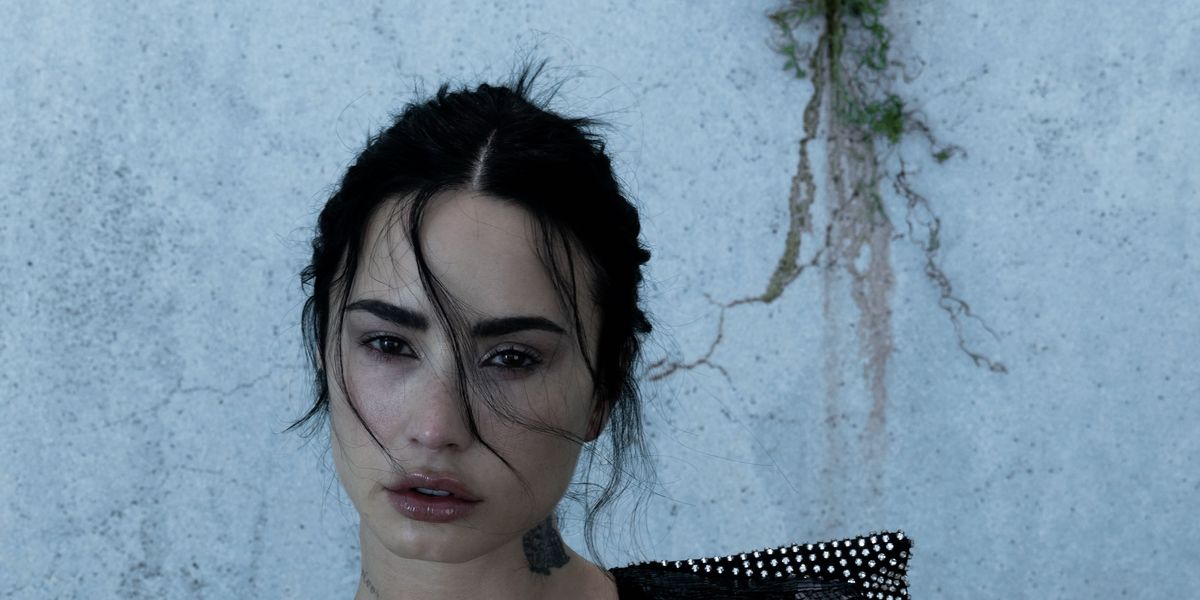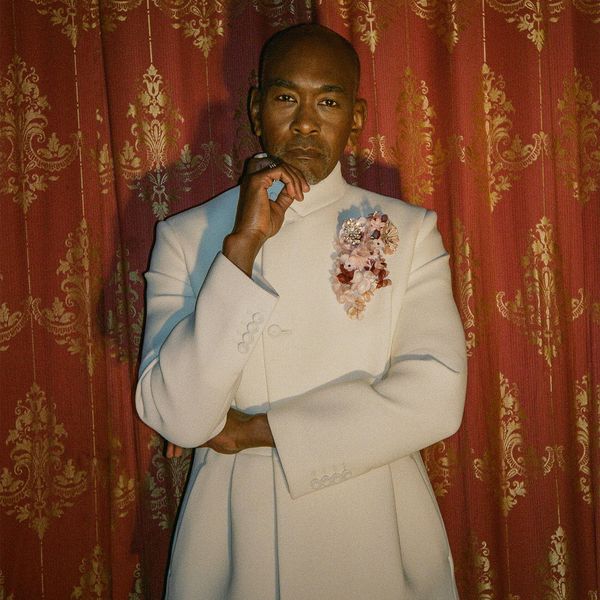
Coolest Person in the Room: Paul Tazewell
Photography by Diego Villagra Motta / Story by Joan Summers / Styling by Angelina Cantu / Grooming by Kirk Cambridge-Del Pesche
Nov 20, 2025
Popularity is relative, especially in the digital age. You could have hundreds of thousands of followers online but be completely unknown in the streets — massively famous on Instagram, YouTube or Twitter, but lack any kind of real, authentic cool in person. For our series Coolest Person in the Room, we pinpoint all the people whose energy is contagious regardless of their following count or celebrity. For this edition, we caught up with Paul Tazewell, Oscar and Tony winning costume designer and one of the brilliant minds behind the world of Wicked: For Good.

What was the first piece that you ever remember designing, even if it was before you were a professional costume designer?
Oh gosh. The first piece might've been a jester costume that I designed for a play that I was in middle school. I remember it was red and gold taffeta from JoAnn’s Fabrics, and it had a hat that had two curved pieces, two spirals. That was the first. I was interested in clothing early, early on, and whether it was dressing dolls or just playtime out of a box, that creativity was part of my family all of the time. My first full on design was for a production of The Wiz. That was when I was a junior in high school, so I designed the costumes for that, and then I was also in that production because at the time I wanted to be a performer.
It sounds like you’ve had this lifelong connection to The Wizard of Oz. Was that on your mind when you first got the job on Wicked, that you had started with the production of The Wiz so long ago?
My career has been, and probably my life overall has been, a series of full circle events. I think it has been in my life since before that time that I was talking about in middle school, because we would watch The Wizard of Oz on TV every year, and the inspiration and magic that incited in me was palpable. I remember how magical going from sepia tone to technicolor in the film really set a tone for how I see magic making in performance. I've carried that into my design since, and worked to recreate the same kind of feeling in other ways — really making note of and paying attention to what insights that kind of magical feeling in people.

All clothing: Dior, Shoes: Giuseppe Zanotti, Flower Broach: Helena Simon, Diamond Broach: With Clarity, Rings: Grown Brilliance
The Wizard of Oz has such a generational legacy — I can remember my grandparents and my great-grandparents having a relationship to it. Did it feel daunting to translate something that has such a storied legacy and such a clear image in people’s minds when it came to costumes for the film?
I knew that it was going to be very significant. The undertaking was very significant because, first off, it was the fan base that Wicked the musical has. Then The Wizard of Oz, obviously, and how that has been embraced by gay culture, American culture overall, and how that story is seen as our American fairytale, one that is based completely in American culture. So being invited to reimagine what the world is, for me, was always: How can I do this and be additive to the overall culture?
I had been faced with that opportunity with West Side Story, and reimagining what that world might be. I had great practice with these characters in all the different tellings of The Wiz that I had done prior to this as well. So it wasn't a new place of creativity for me, it was re-imagining what I could bring to this storytelling and still honor what's come before. That is what we collectively, all of the designers and Jon M. Chu, have been able to do this with these two films. We continue to embrace what the overall Ozian culture has been, and then create a newness in how audiences experience this story.
With Glinda and Elphaba, they obviously have such iconic designs drawing from both the films and the musical. What other inspirations did you pull from for their designs? Were their designers, or other portrayals of witches and wizards in popular culture that you were inspired by?
In creating a new vision, I also acknowledge the lens that I’m seeing it through, which is a lens of 2024, 2023 when we were just inventing what the world was. Designers that were doing cutting edge innovations, like Iris Van Herpen, or Alexander McQueen and those that have come after him. Issey Miyake. The task was imagining a world that felt nostalgic, meaning that it wasn’t so foreign that audiences can’t find themselves in it or can’t relate to it, but also felt new and otherworldly. That was what we were always going after as well. I was pulling from everywhere that was a part of modern culture and then translating that into something that didn’t feel like it was technological, because we weren’t of that world. We were in an analog world.
All clothing: Dior, Shoes: Giuseppe Zanotti, Flower Broach: Helena Simon, Diamond Broach: With Clarity, Rings: Grown Brilliance
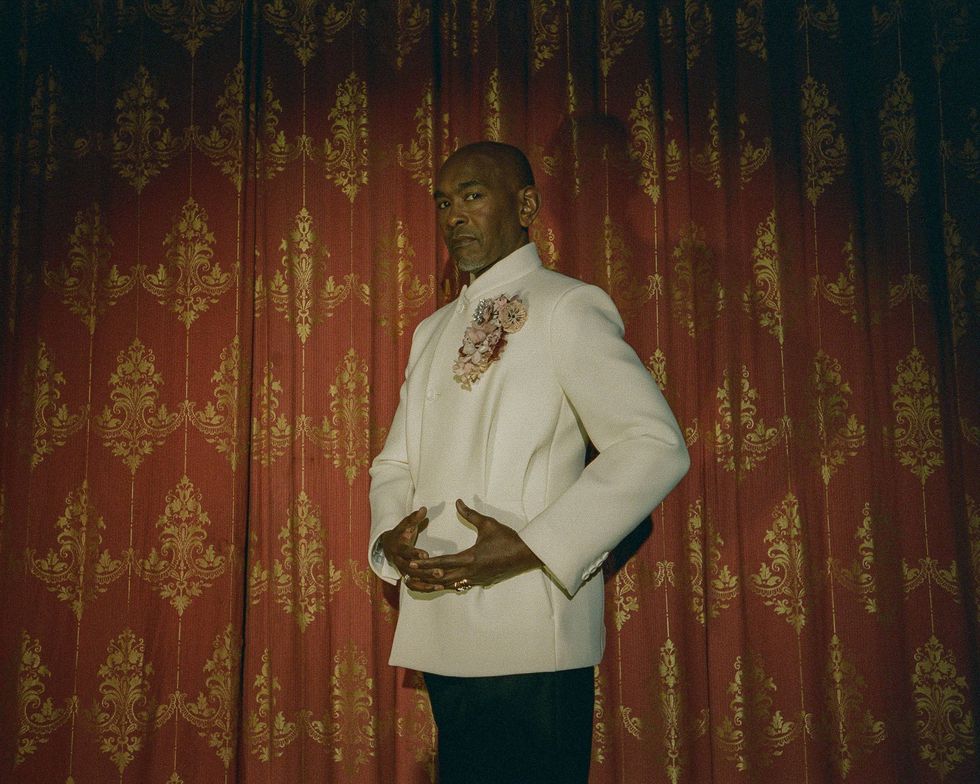
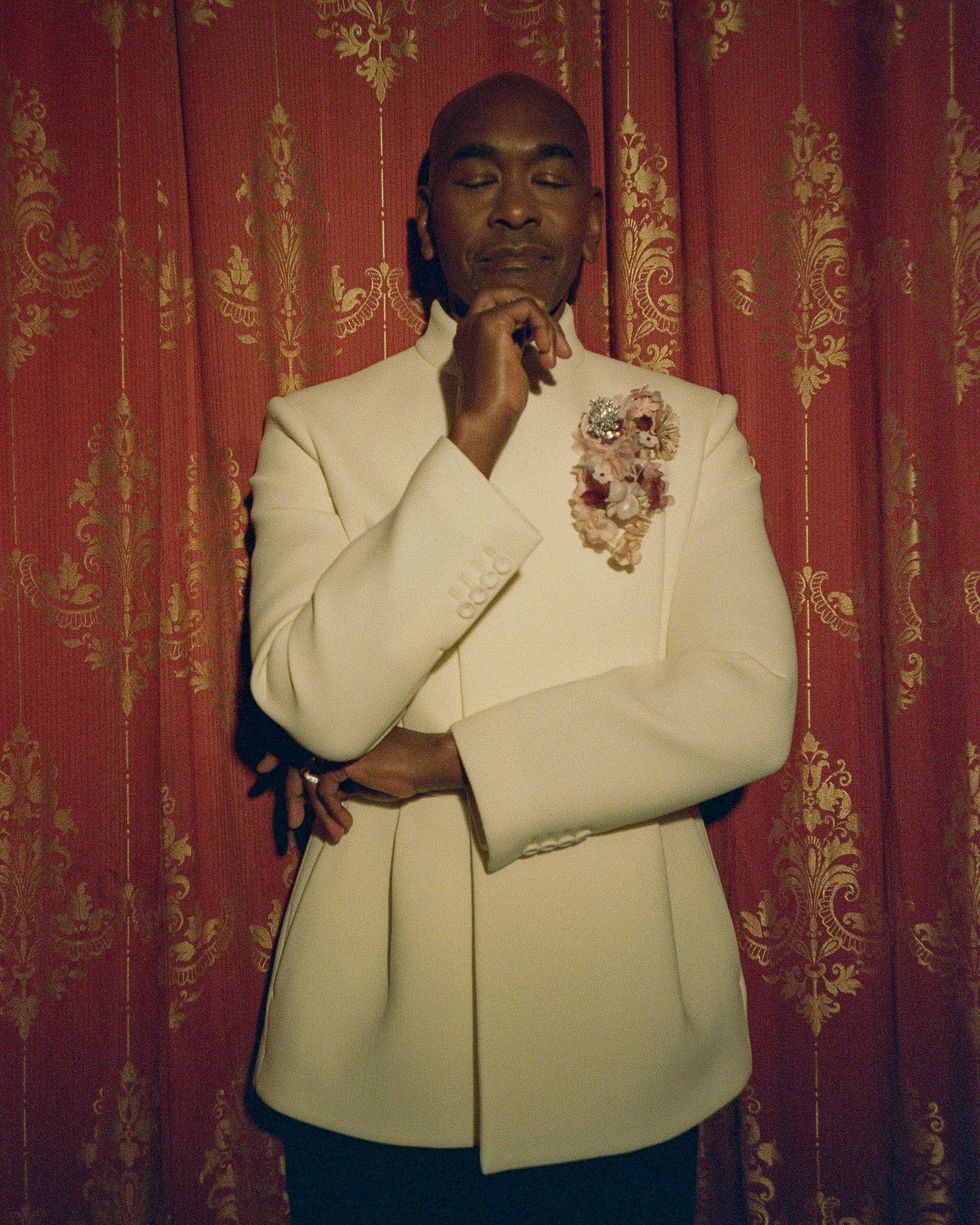

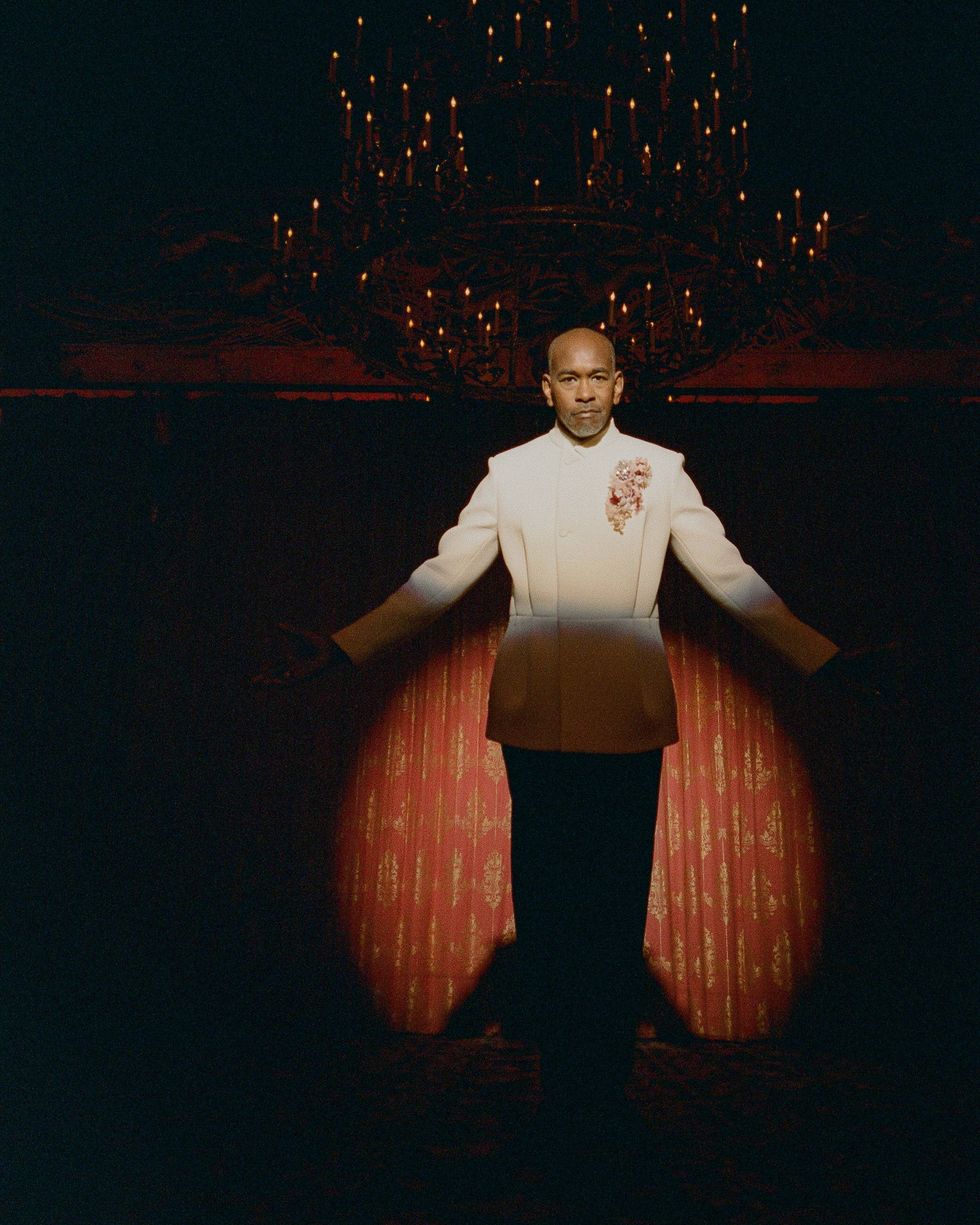
I most recently saw your work in Death Becomes Her. When Michelle first comes down in that, everyone let out a gay gasp! Something that comes through in your work is the element of storytelling for characters through their clothing. I see it in Wicked, and in Death Becomes Her, where the costumes reveal so much about the three women. How much is that a director coming to you to explain their needs, and how much is your own investigation and interpretation of these characters?
I’m hired, and I think that’s why directors and producers enjoy my work, because I break it down into a language that is specific to the clothing. I’m searching for ways to enhance the action and the characters that are being represented onstage, and how the different characters visually relate to each other. So setting up Viola — you were talking about Michelle Williams — it’s setting her up as a visual vial basically, which I interpreted into this geode. From the inside she’s sparkling amethyst, and the amethyst crystal relates to the vial that she is holding, the potion.
It’s not outside the story, it’s not outside the storytelling. It actually rides adjacent to it, and is hopefully additive to who these characters are. When you think about the finale dresses for Madeline and for Helen — those fancy beaded dresses, those gowns that they wear in their big climactic moment. They’re suggestive of the injuries they’ve manifested, or they’ve survived. You’ve got the hole in the stomach that then transforms into this explosion, this beaded pattern on her purple dress. Then there’s the twisted neck on Madeline, where that is reinvented as a sculptural shape. I’m always hoping to, as a designer, find ways to illustrate these things. That’s also why I love musicals, because you can be a little broad. It allows me to be more poetic than I might be if it was a straight play. It suits me.
All clothing and accessories: Emporio Armani, Shoes: Gianvito Rossi, Broach: Bohème by Véro, Rings: Grown Brilliance

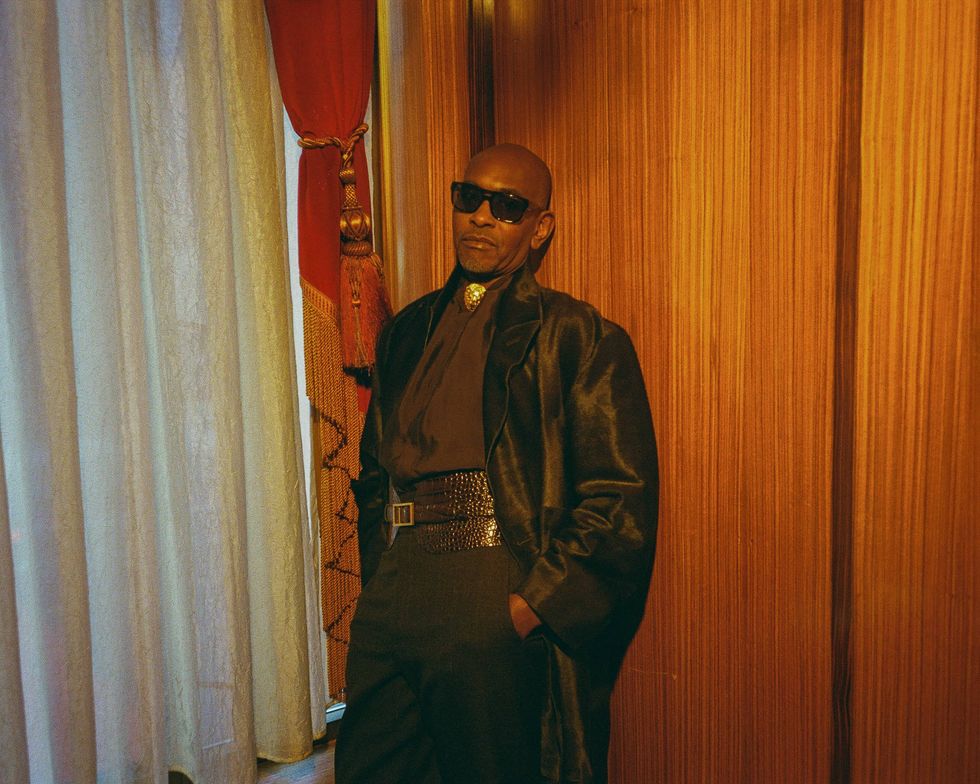
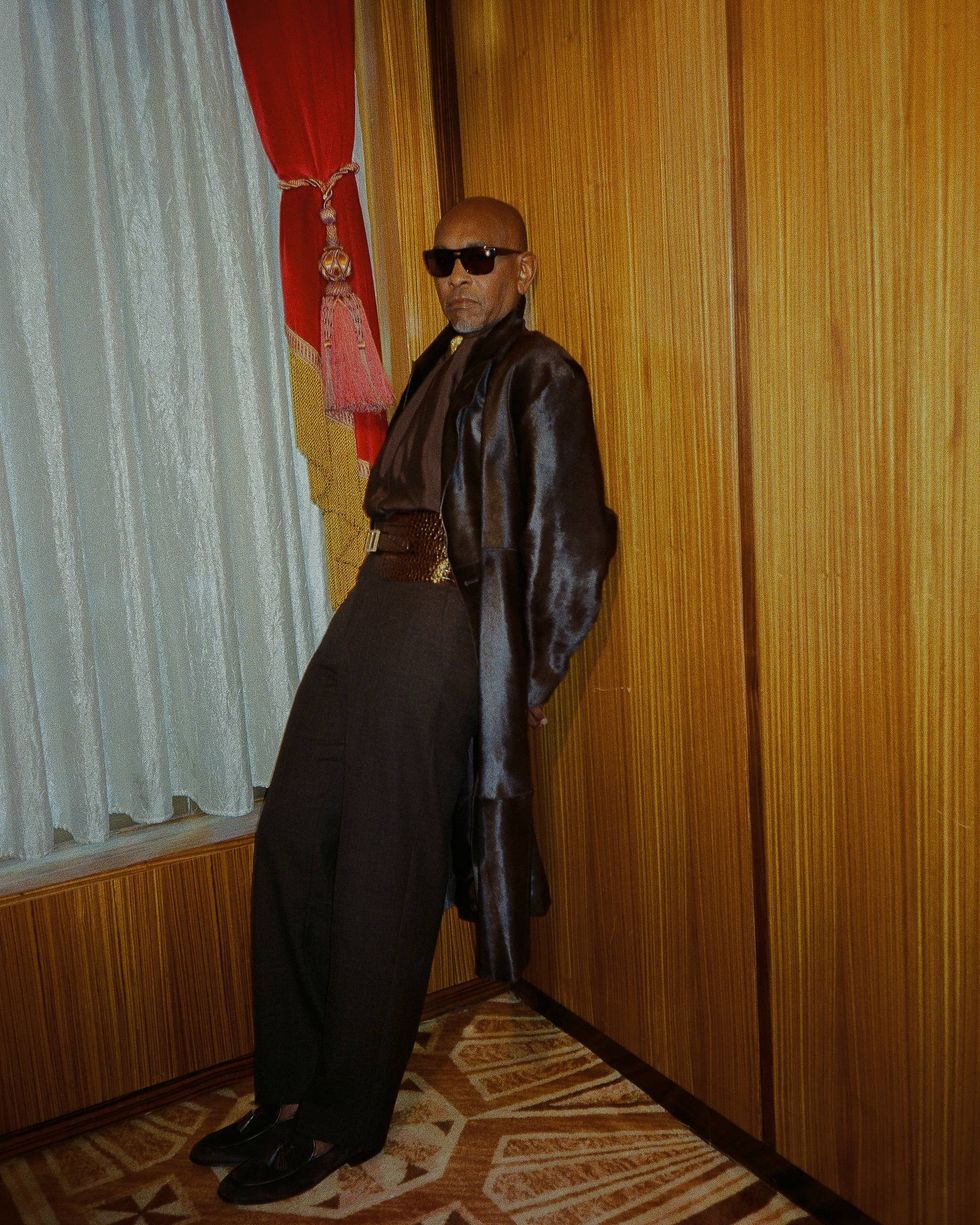
Your work in both Wicked and in Death Becomes Her then lead to your historic double win at the Oscars and at the Tonys, in the same year. What did those two wins change for you, in terms of how you approach work now, the kinds of projects you want to work on? Or, is it going to be: I’m going to keep taking on the work that I love and want to do?
It's a great question, and it has changed greatly, and the change is internal. The change was to stand up on that stage and receive the Academy Award for the work that I did, for work that I love, for an experience that I will always cherish. It's getting that kind of acknowledgement. That kind of approval, that kind of validation is really life changing. It happened with Hamilton as well, and receiving the Tony Award for Hamilton — there's a period of time where you say, Well, how can I, when will I creatively top what this experience held for me? I hope that there will be something that is at least as gratifying as this has been, and this isn't to diminish what the experience is, or to say there's going to be something that will do that.
It really is just: How do I continue to engage in a big way with big projects and hopefully generate the same kind of experience for others? So that becomes the priority for me — looking to the next story that will be meaningful, that will hold creative expansion for myself, and that will receive engagement, acknowledgement, and bring joy to the most people. Whether it's for film or it's for theater. I'm also pursuing publishing and collaborations with lifestyle and with luxury, my ability to interpret joy, human engagement, creating environments and experiences that speak to being human and are joyful in that humanity. That's what my pursuit is. It's grown.
To go back to your original question, it has allowed for me to feel completely present in expanding in that way because of the validation that it has stirred up.
All clothing: McQueen by Sean McGirr, Shoes: Giuseppe Zanotti, Broach: Maison Spoiled, Watch: Louis Vuitton Watches, Rings: Grown Brilliance
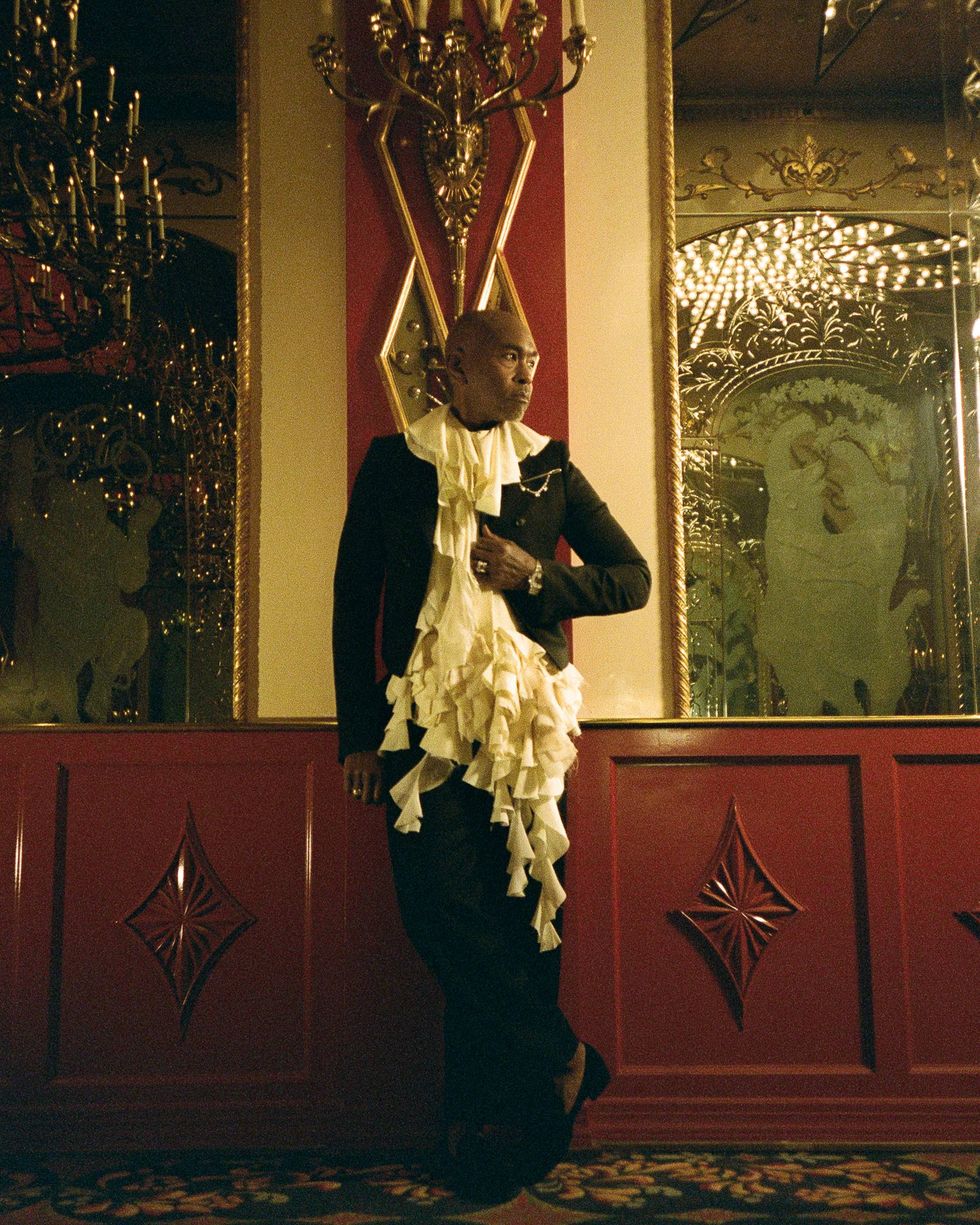
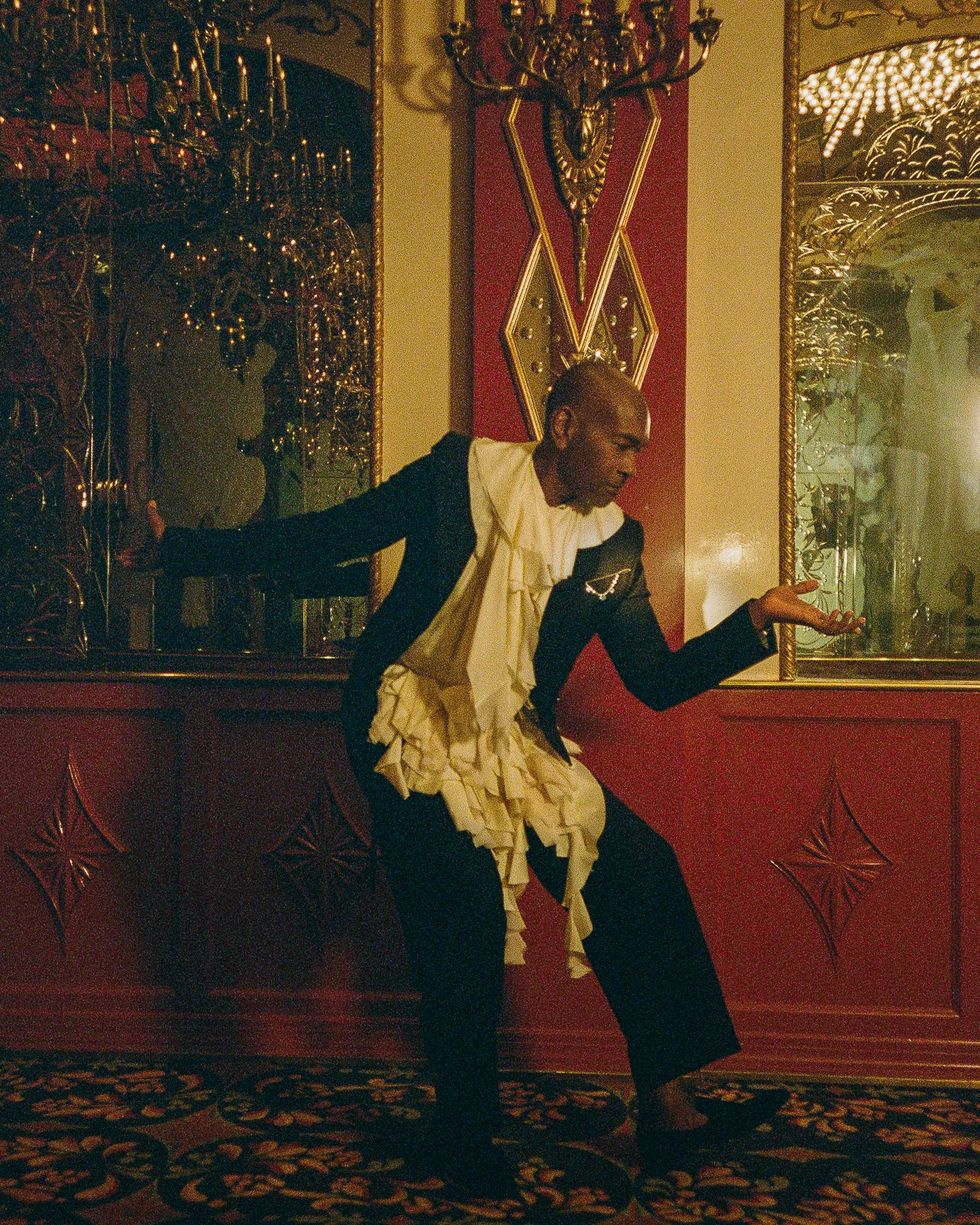
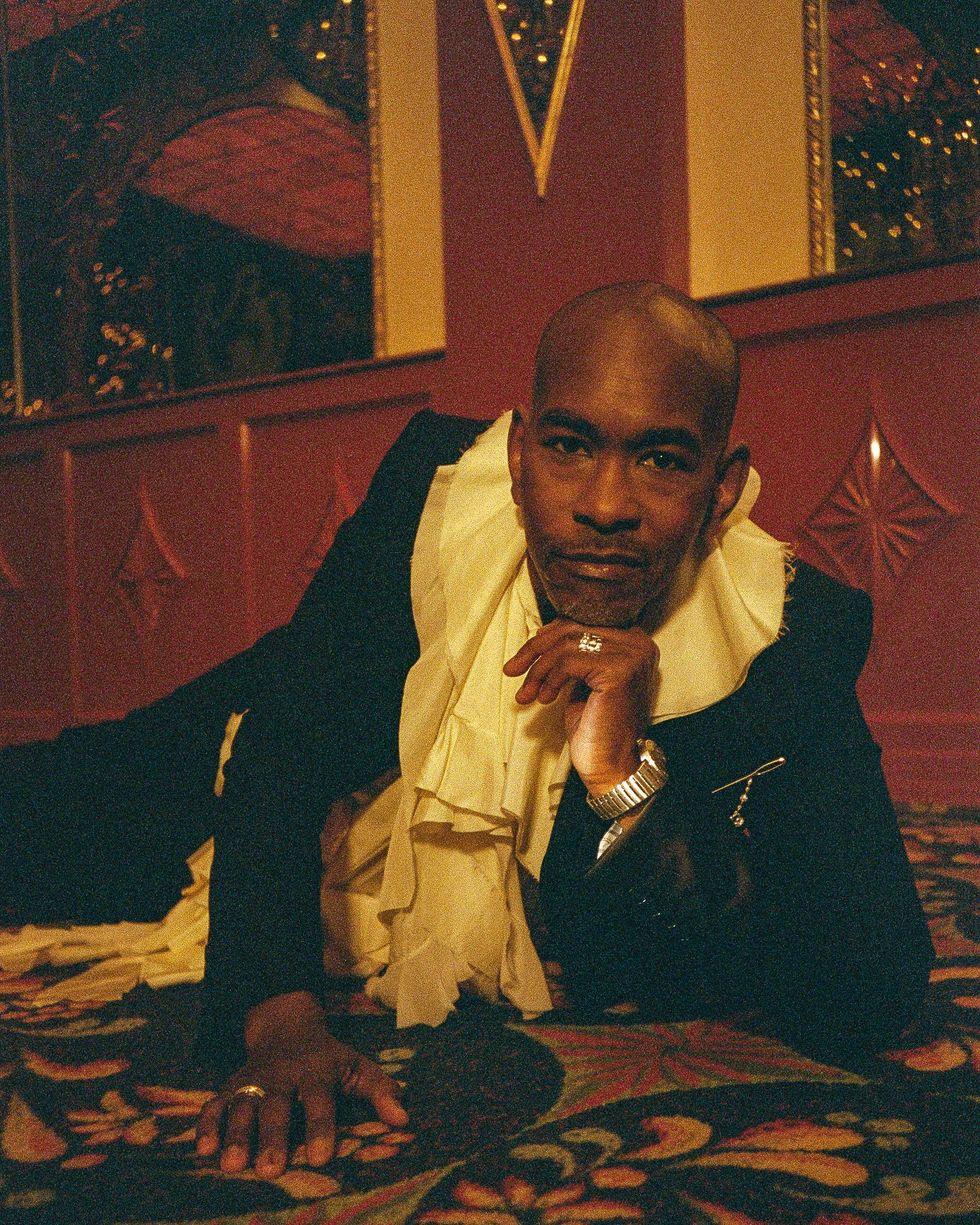
I was reacquainting myself after your win with your theatrical work and your canon of design, and I hadn’t realized you’d done Elaine Stritch’s one woman show back in the day. As a Stritch-head, I would be remiss not to ask what that experience was like? She’s a personal hero of mine.
I’m a Stritch-head as well. It was, again, another life changing moment. I am so grateful, and I’ve been so privileged to work with amazing greats within theater and film. The fact that George C. Wolfe — who I have a beautiful collaborative relationship with, I’ve learned so much from him — invited me to join forces in supporting Elaine Stritch. That was late in her years, and to have that opportunity, to understand her energy, her point of view, her history… working with her to understand what she’s brought to the theater landscape as well, I honor that moment in time. I remember when we were designing her one woman show, I think I designed maybe five different looks for her, and we created all of them, and then she turned around and decided it was going to be a white shirt and black tights.
It was an iconic look!
And her Manohlo Blahnik shoes? It was perfect. She spent all the time in rehearsal in an oversized white t-shirt and a little hat, and that was her. That was what she felt comfortable in, and far be it from me as a designer to impose some other idea onto what is actually just naturally there. It really embraces everything that she is — there is nothing that needs to be added on. It was a gift, that was a wonderful time.
I just got chills listening to you talk about Elaine! Going back, what is a show that you feel like had the most impact on your design career to follow, or the show you think of as being the one that changed things for you, or set you on a path?
There have been a good many, and this is what I was speaking of, the privilege that I’ve had, the opportunities that I’ve had, that have been so poignant. To start off, it was my first Broadway show, directed by George C. Wolfe. It was Bring in 'da Noise, Bring in 'da Funk. That changed the landscape of Broadway theater, of how we present story, how we see dance and a Broadway show, what we classify as a Broadway show. To be connected with that, and to also have it be the Black American story as it's laid out in a poetic way, was golden. That set the tone.
Then Caroline, or Change came soon after that, again with George C. Wolfe as director, written by Tony Kushner. A really smart piece of theater that meant a lot, and again, spoke of the American story specific to the 1960s, but was universal in the dramatic impact. Then Hamilton, that was huge, how it captured the zeitgeist of what was going on politically with Obama and his family, how it spoke to Americans, how it then spoke globally, how it’s continued to bring joy to people, young people, and draw them into theater and strengthen how they see the industry of live theater. Life changing, and life changing for everybody that was involved with that production. West Side Story with Steven Spielberg… Again, it is as much about the people that I was working with and the people that he surrounds himself with.
It was a full circle moment, because that was the first Broadway show that I was ever in when I was in high school. To be able to design it on that level, with that scope, was again a huge gift. Whether it’s Thomas Kail, whether it’s George C. Wolfe, or Jon M. Chu. Working with Cynthia and Ariana… it’s big, big, big love, and big creating, and having the opportunity to offer up a point of view that brings joy to so many people. That’s why I do what I do.
There’s somebody out there picking up a sewing needle for their high school production of something or other, and they’re wondering what to do next. What advice do you have for them?
You have to walk through life as a response to the opportunities that you create, or the opportunities that you are given, and you do what you need to do in order to prepare yourself. If they’re picking up a needle, then perfect picking up that needle, and as you’re thinking about the cleanest line of stitching that you could create, what are those other ideas, fantasies, that you imagine yourself creating? Run with that, and find your passion in that kind of creating, because that’s where I started. It was picking up a needle. It was picking up a pencil, a brush, a paint, making a mess. My mother’s kitchen table, on my mother’s Singer sewing machine, always doing a craft project, always creating worlds. You just do what you have to do, and avoid discouragement. That’s not an easy thing.

All clothing: Ralph Lauren, Broach: With Clarity
Photography by Diego Villagra Motta
Story by Joan Summers
Styling: Angelina Cantu
Grooming: Kirk Cambridge-Del Pesche
Lighting Designer: Peter Demas
Styling Assistants: Quinn Tommy Herbert, Sal Lee
Executive Creative Producer: Angelina Cantu
Entertainment Editor: Joan Summers
CCO & CEO: Brian Calle
Location courtesy of The Russian Tea Room
From Your Site Articles
Related Articles Around the Web
Entertainment
Rami Malek Is Certifiably Unserious
Story by Joan Summers / Photography by Adam Powell
Story by Joan Summers / Photography by Adam Powell
14 November
Music
Janelle Monáe, HalloQueen
Story by Ivan Guzman / Photography by Pol Kurucz/ Styling by Alexandra Mandelkorn/ Hair by Nikki Nelms/ Makeup by Sasha Glasser/ Nails by Juan Alvear/ Set design by Krystall Schott
Story by Ivan Guzman / Photography by Pol Kurucz/ Styling by Alexandra Mandelkorn/ Hair by Nikki Nelms/ Makeup by Sasha Glasser/ Nails by Juan Alvear/ Set design by Krystall Schott
27 October
Music
You Don’t Move Cardi B
Story by Erica Campbell / Photography by Jora Frantzis / Styling by Kollin Carter/ Hair by Tokyo Stylez/ Makeup by Erika LaPearl/ Nails by Coca Nguyen/ Set design by Allegra Peyton
Story by Erica Campbell / Photography by Jora Frantzis / Styling by Kollin Carter/ Hair by Tokyo Stylez/ Makeup by Erika LaPearl/ Nails by Coca Nguyen/ Set design by Allegra Peyton
14 October
Entertainment
Matthew McConaughey Found His Rhythm
Story by Joan Summers / Photography by Greg Swales / Styling by Angelina Cantu / Grooming by Kara Yoshimoto Bua
Story by Joan Summers / Photography by Greg Swales / Styling by Angelina Cantu / Grooming by Kara Yoshimoto Bua
30 September
Music
Demi Lovato Is No Joke
Story by Ivan Guzman / Photography by Jason Renaud / Styling by Chris Horan/ Makeup by Loftjet / Set design by Allegra Peyton
Story by Ivan Guzman / Photography by Jason Renaud / Styling by Chris Horan/ Makeup by Loftjet / Set design by Allegra Peyton
15 September
